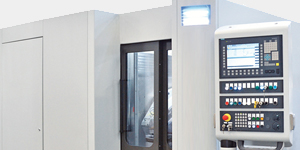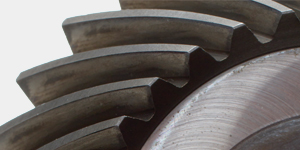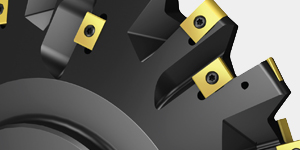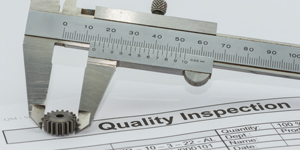In our modern world, motion is fundamental. From the vehicles that transport us, to the intricate machinery that produces our goods, countless devices rely on a silent, indispensable component: the gearbox. Often hidden from view, this mechanical system plays a pivotal role in translating raw power into purposeful action, making our daily lives and industrial processes run smoothly and efficiently.
At its core, a gearbox is a mechanical device that employs a set of gears to precisely alter the speed, direction of rotation, or the torque of motion. It functions as a crucial intermediary, bridging the gap between a motor and the specific work it needs to perform. The primary objective of a gearbox is to enable a power source to operate within its most efficient range while simultaneously allowing the machine it powers to execute tasks that demand varying levels of speed or force.
 A gearbox’s primary function revolves around manipulating three interconnected concepts: speed, torque, and power.
A gearbox’s primary function revolves around manipulating three interconnected concepts: speed, torque, and power.
- Speed: The speed of a gearbox refers to how fast the input is rotating and is typically measured in revolutions per minute (RPM). The speed of a gearbox is limited by the type of gears that are used to transmit the motion. Worm gearboxes are typically limited to 1,800 rpm, whereas helical spur gearboxes are limited to 8,000 rpm.
- Torque: The torque of a gearbox is the rotational force that is transmitted into the unit. It can be in units as small as inch-ounces to as large as foot-pounds.
- Power: Power is the rate at which work is performed, effectively combining both speed and torque. The gearbox’s ingenuity lies in its ability to adjust the balance between speed and torque to deliver the precise amount of power required for any given task.
Regardless of the gear systems used inside a gearbox, each gearbox is built with a fixed gear ratio. This ratio is the key determinant of how speed and torque are transformed from the input to the output. For all gearboxes, there is an inverse relationship between speed and torque. As the speed is reduced through gearing, the torque is increased proportionally.
 While gears are an essential element of a gearbox, there is a sophisticated assembly of other inter-connected parts, all meticulously arranged within a protective casing that makes up a gearbox. Each component plays a vital role in the seamless operation of the system.
While gears are an essential element of a gearbox, there is a sophisticated assembly of other inter-connected parts, all meticulously arranged within a protective casing that makes up a gearbox. Each component plays a vital role in the seamless operation of the system.
- Gears: Gears are the primary elements responsible for transmitting power and altering speed and torque. They accomplish this transformation based on their size and tooth count. Some of the gear types used in gearboxes include spur gears, helical gears, bevel gears, and worm gears. Each type permits a different torque, speed, or orientation for the output.
- Shafts: The selection of the shaft holding the gearing is crucial to the design of a gearbox. It needs to be of sufficient size to maintain the rigidity of the gear mesh and at the same time be as small as possible to minimize inertia.
- Bearings: Crucial for smooth and efficient operation, bearings are mechanical components that support the rotating shafts and gears. Their primary function is to reduce friction and wear between moving parts, allowing them to spin freely and quietly. Without proper bearings, the high rotational speeds and forces within a gearbox would quickly lead to excessive heat, wear, and eventual failure.
- Housing: The housing is the outer shell that encloses and protects all the internal components of the gearbox. Beyond physical protection, housing plays a critical role in containing the lubricating oil or grease, which is essential for reducing friction and dissipating heat generated during operation. It ensures the gearbox operates efficiently and reliably even under demanding conditions.
The efficiency and longevity of a gearbox is not just the summation of its individual parts’ qualities as each one depends on the interaction and precise alignment of the other components. For instance, the shafts support the gears, the bearings support the shafts, and the housing protects the entire assembly.
A malfunction in one component, such as a bearing seizing due to inadequate lubrication, will lead to increased friction, accelerated gear wear, excessive noise, and ultimately, a complete system breakdown. Alternately, misalignment of the holes for the shafting in the housing will cause the bearings or the gears to bind, also leading to increased friction, premature wear, excessive noise and finally failure. When professionally designed and manufactured, coupled with proper maintenance, a gearbox will function reliably and effectively over its lifespan.
 When designing a gearbox, there are several critical factors that must be considered during the gearbox design process:
When designing a gearbox, there are several critical factors that must be considered during the gearbox design process:
- Speed and Power: The designers must determine the range of rotational speeds the machine needs to achieve and the amount of power it must transmit. This directly influences the number of gear ratios required and the overall dimensions of the gears themselves.
- Direction of Force Transmission: The design must account for whether the output needs to rotate in the same or opposite direction as the input, or if a change in axis direction is required. This dictates the specific type of gears to be used, such as spur, helical, bevel, or worm gears.
- Physical Constraints: The available space for the gearbox is a significant limiting factor. This constraint influences the overall size and shape of the gearbox, potentially leading to the selection of compact designs like planetary gearboxes or specific shaft arrangements to fit within confined spaces.
- Material Selection: The designer’s choice of materials for gears, shafts, and other components will profoundly impact the gearbox’s durability, strength, weight, and manufacturing cost.
- Durability: The designer must determine the expected lifespan of the gearbox under the anticipated loads. This involves analyzing the strength of gear tooth surfaces and how gears might bend or deform under stress, so that the gearbox can withstand prolonged operation without premature failure.
- Noise and Vibration: Since gearboxes can be a significant source of noise and vibration, the designer should consider methods to mitigate sound and vibration levels. This can be resolved by selecting specific gear tooth geometries such as helical gears as they are inherently smoother and quieter than spur gears, or ground tooth gears as this optimizes the gear’s tooth form.
- Lubrication: Proper lubrication is essential for the long-term operation and efficiency of a gearbox. It reduces friction, dissipates heat generated by meshing gears, and minimizes wear between moving parts. The type of lubricant, oil, or grease, and the method of its application are critical design decisions, often influenced by the operating environment and noise considerations.
Distinct types of gearboxes are preferred in different applications due to each offering unique advantages. The different types of gearboxes include:
- Helical Gearboxes: Recognized for their high efficiency and smooth, quiet operation due to their angled teeth, helical gearboxes are ideal for high-speed applications such as turbines, compressors, and blowers.
- Bevel Gearboxes: These are employed when the direction of power transmission needs to be changed, often at right angles. These are commonly found in conveyor systems.
- Worm Gearboxes: Compact and capable of providing remarkably high torque output, worm gearboxes also possess a unique self-locking feature, meaning they cannot be back driven. This makes them ideal for heavy-duty applications with limited space, such as elevators, presses, and automotive windshield wipers.
- Planetary Gearboxes: Known for their precision, high power density, and compact size, planetary gearboxes are commonly found in applications requiring high accuracy and control, including robotics, servo motors, and machine tools.
- Spur Gearboxes: These are cost-effective and can achieve high gear ratios in a compact form. However, due to their straight-cut teeth, they can be noisier than other types and are more prone to wear. They are often used for general speed control and packaging applications.
The incredibly wide range of applications, from the tiny mechanisms within a can opener to massive wind turbines, underscores that the functions of gearboxes, manipulating speed, torque, and direction, remain constant regardless of scale or purpose. This broad applicability reveals that the gearbox transcends industry and is not merely a specialized component, but it is a fundamental engineering solution to the universal challenge of effectively matching a power source’s characteristics to a load’s operational demands.
























